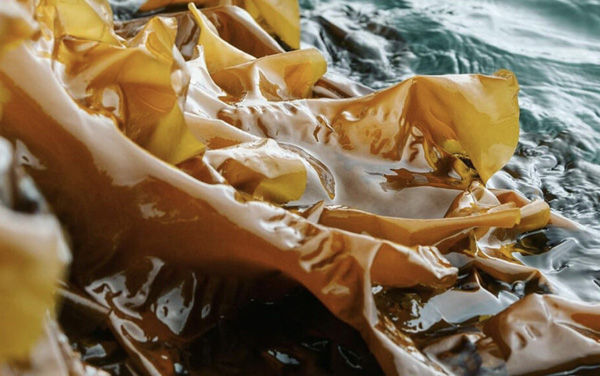Seaweed for Cleaner Air

Invisible, yet not intangible, the air around us is easy to take for granted.
Air comprises billions of tiny particles of gaseous water, nitrogen, oxygen, argon, pollen & dust, creating the atmosphere we call home.
Some days this atmosphere feels light, meditative to breathe, and fills our lungs with the vital stuff we need to survive.
Once in a while, when we travel to a city or past a factory, the heavy air makes us want to cover our airways. It smells terrible and gives us an anxiety-inducing tight chest or cough.
You probably already know what I’m getting at here. Pollution. Contaminated water vapour. Disease, dirt and far too much carbon dioxide.
The task of protecting our atmosphere is probably the most epic adventure of our generation.
To achieve this goal, we need air-purifying ecosystems to counter our harmful, yet as of now irreplaceable, technology and industries!
The atmosphere is a superhighway in the sky, transporting water around our precious planet. Water evaporates at its surface and rises to form a cloud, floating with the wind before being released to us as precipitation or rain, creating flowing streams and mighty lakes.
Wetlands, forests and soil all filter pollutants from the air. Forests, plants and algae are beneficial as they create more of the good stuff, sugar and oxygen.
Algae is particularly useful. Its story is as old as time itself.
Over millions of years, tiny single-celled algae and cyanobacteria have produced oxygen.
Some of these microscopic critters used up their oxygen as they decomposed.
Some sank deep into the ocean, settling at the bottom and leaving a little oxygen behind, slowly building up to create the oxygen-rich atmosphere we breathe today.
Today this process of photosynthesis is still happening, with more than half of the planet’s oxygen being produced in the top 200 meters of the ocean.
Wherever the sunlight can penetrate the water, photosynthetic organisms can be found.
Most algae exist as single cells that make up what we call phytoplankton.
Other macro-algae we call seaweed.
Rich in nutrients and providing shade underwater, seaweed is more than a photosynthetic organism. It provides food and habitat for all its locals and helps create the ocean bed as it decomposes. Some local organisms even have their own process of photosynthesis!
A part of seaweed’s air-purifying process is its absorption of nitrogen. When in contact with oxygen, nitrous oxide is released: the stuff we get in car fumes! This greenhouse gas is 298x more potent than CO2.
It does an excellent job with carbon, too, absorbing at a rate faster than any land plant. It is estimated to store around 175 million tonnes of carbon a year, over half a million tonnes in Scotland alone!
Next to red and green, brown algae make up the largest group of seaweeds. We call brown algae: Kelp.
Kelp is already absorbing close to 10% of car emissions across Scotland.
Still, this number could increase, especially with a little helping hand from one of the planet’s most influential farmers, humans.
It’s a bonus that by farming Kelp and upkeeping their natural forests, we can also reap the benefits of a delicious and nutritious food source for all of us folks on land.
We, humans, are disciples of oxygen. With oxygen beholden to Kelp ecosystems, it’s no wonder so many of us are getting the Kelp obsession!